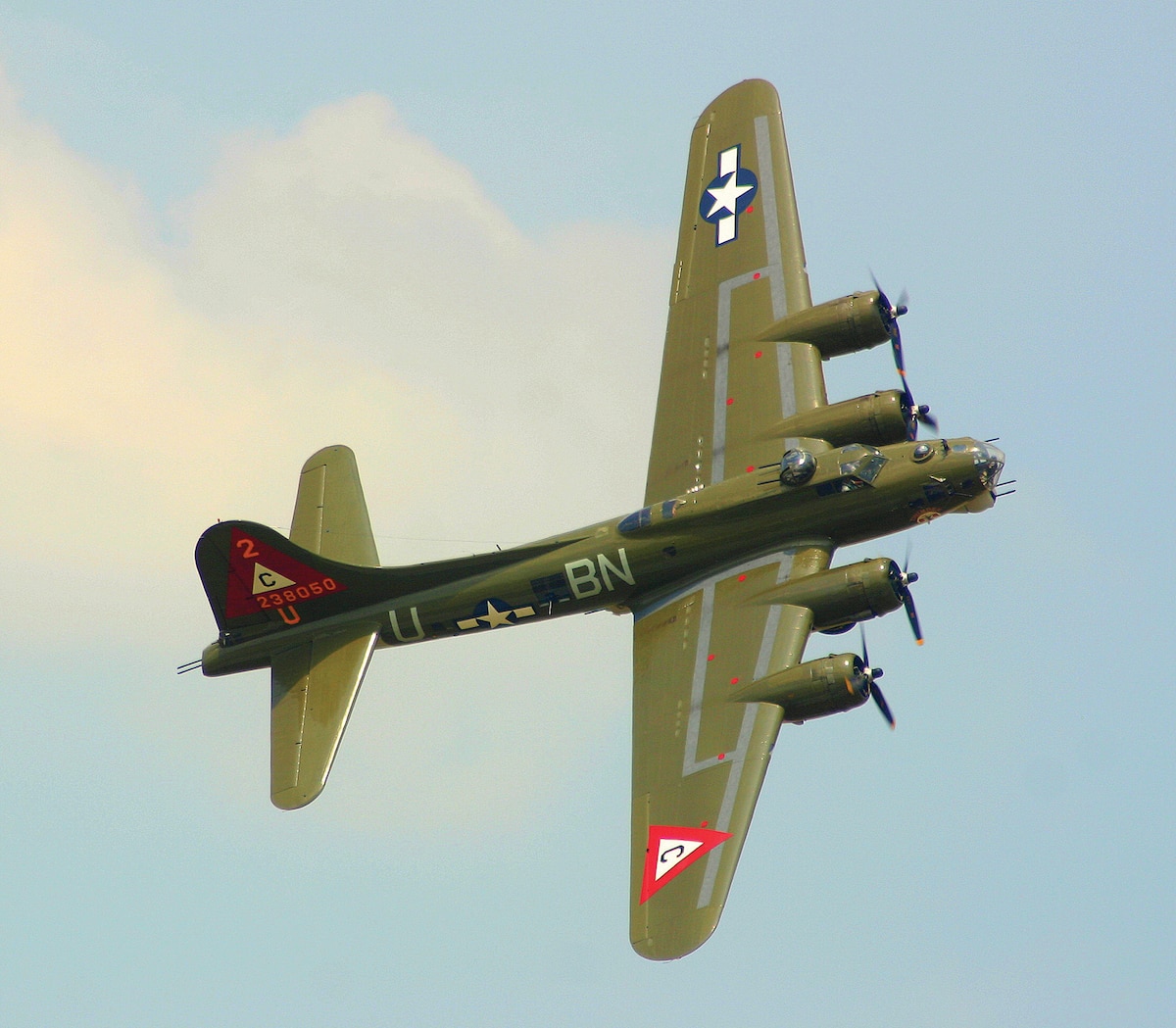The B-17G, also known as the “Flying Fortress,” is one of the most iconic aircraft in military history. This remarkable bomber played a pivotal role during World War II, becoming a symbol of American air power and resilience. Known for its robust construction, heavy firepower, and ability to endure incredible damage, the B-17G redefined the landscape of aerial warfare and earned its place in aviation history as a true legend.
The Birth of a Fortress
Developed by Boeing in the mid-1930s, the B-17 was designed to meet the U.S. Army Air Corps’ need for a long-range, high-altitude bomber. The final version, the B-17G, was introduced in 1943, representing the pinnacle of the Flying Fortress’ development. Equipped with increased firepower and advanced defensive systems, the B-17G was engineered to dominate the skies over Europe and the Pacific. Its durability and ability to withstand severe battle damage made it one of the most reliable bombers of the war.
Design and Features
The B-17G was a four-engine heavy bomber with a wingspan of 103 feet and a length of 74 feet. Powered by four Wright R-1820 Cyclone engines, each delivering 1,200 horsepower, the aircraft had a maximum speed of 287 mph and a range of over 2,000 miles, making it ideal for long-range bombing missions deep into enemy territory.
What made the B-17G stand out was its defensive armament. It was equipped with 13 Browning .50 caliber machine guns positioned in turrets, providing a near-360-degree coverage against enemy fighters. The aircraft’s iconic chin turret, a new addition in the G model, protected the bomber from head-on attacks, a tactic often used by German Luftwaffe pilots.

The Role in World War II
The B-17G was most famously used during the strategic bombing campaigns over Europe. Its primary mission was to cripple Nazi Germany’s war machine by targeting industrial factories, railways, oil refineries, and military installations. Flying from bases in England, B-17Gs took part in daylight raids deep into enemy territory, often facing fierce resistance from anti-aircraft artillery and enemy fighters.
The bravery of the crews flying these missions became legendary. Despite the intense enemy fire and the perilous conditions, the B-17G proved its worth by completing critical missions that helped turn the tide of the war. The aircraft’s rugged construction allowed many damaged bombers to return home, sometimes with entire sections of their wings or fuselage shot away.
One of the most famous missions involving the B-17G was the bombing of Berlin in 1944. These high-risk missions were critical in weakening Germany’s war production capabilities and ultimately played a key role in the Allied victory in Europe.

“Flying Fortress” Nickname and Durability
The B-17G earned its “Flying Fortress” nickname due to its incredible durability in combat. Stories of heavily damaged B-17s limping back to base on just one or two engines are legendary. Many aircraft returned home with significant battle scars — from flak-riddled wings to entire sections missing — yet still managed to bring their crews to safety.
This resilience gave the crews a sense of security, knowing they were flying one of the toughest bombers in the war. Veterans often spoke of the B-17G with reverence, attributing their survival to the aircraft’s ability to endure brutal attacks.
Legacy and Cultural Impact
The B-17G wasn’t just a technological marvel; it became a symbol of American courage and determination. During the war, the sight of formations of B-17s flying in tight “combat box” formations, unleashing devastating bombing raids, became a powerful image of Allied strength.
After the war, the B-17G’s legacy continued in popular culture. Films like Memphis Belle and documentaries immortalized the aircraft’s role in World War II, celebrating the bravery of the crews who flew them. Even today, the B-17G remains a beloved aircraft among aviation enthusiasts, with several restored models still flying in airshows around the world, keeping the spirit of the Flying Fortress alive.
![B-17G Flying Fortress [Add-On | Livery] - GTA5-Mods.com](https://img.gta5-mods.com/q95/images/b-17g-flying-fortress-add-on-livery/90fe37-Grand%20Theft%20Auto%20V%20Screenshot%202018.05.13%20-%2000.26.31.66.jpg)
Conclusion
The B-17G Flying Fortress is more than just an aircraft; it is a symbol of resilience, bravery, and the indomitable spirit of the men who flew it. Its contribution to the Allied victory in World War II is immeasurable, and its design set a standard for durability and firepower in military aviation. Over 70 years later, the legend of the B-17G lives on, a testament to its pivotal role in one of the greatest conflicts in human history.






